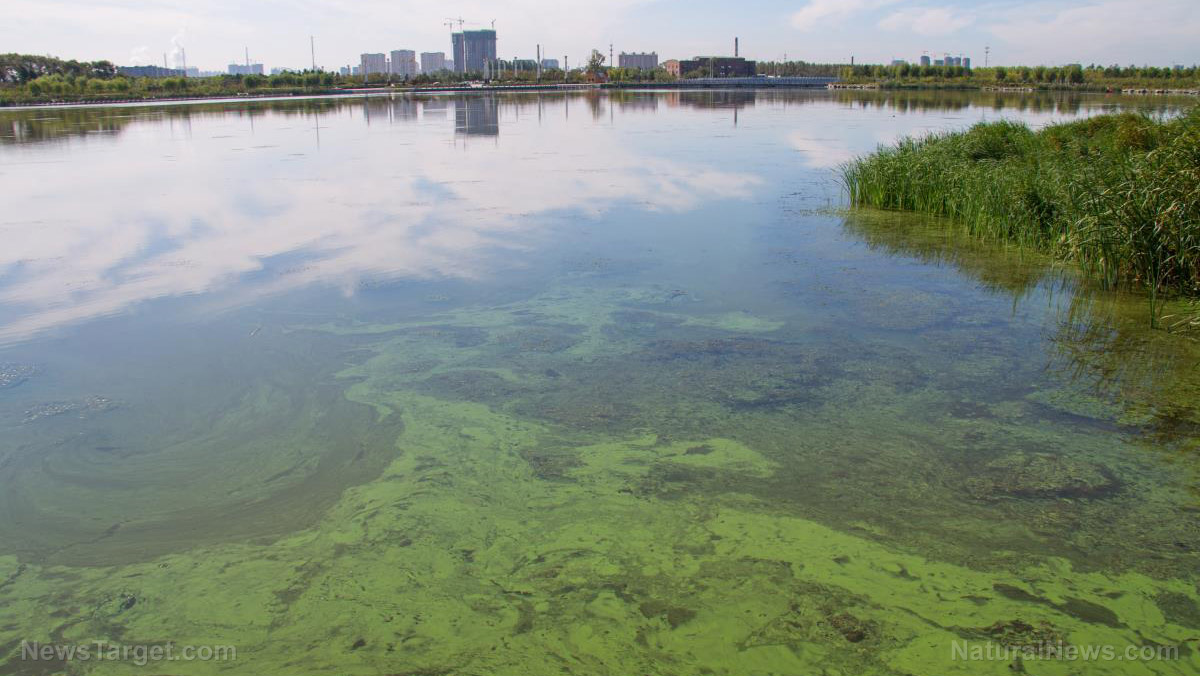“Forever chemicals” from almost 42,000 sources threaten to contaminate drinking water
10/19/2021 / By Ramon Tomey

Toxic “forever chemicals” from landfills, water treatment plans and other sources threaten the safety of potable water sources in the U.S., scientists claim. These polyfluoroalkyl substances (PFAS) used in many household products do not break down and threaten to contaminate drinking water. They can cause many health problems when they accumulate in the body.
Researchers with the anti-pollution organization Environmental Working Group (EWG) analyzed the Environmental Protection Agency‘s (EPA) public records to find potential sources of PFAS contamination. They found that water sources located near landfills, wastewater treatment plants, petroleum refineries, airports and metal processing facilities are at most risk for these forever chemicals.
“Our investigation identifies a huge number of potential sources of contamination. It also provides a framework for deciding where and what to test so we can end releases into the environment.” says David Andrews, EWG’s senior scientist. “Every community in the U.S. is likely affected by PFAS contamination, but those living near or downstream from industrial facilities may be more at risk.”
The anti-pollution group says in a statement that data from California and Michigan show a common trend of PFAS contamination in many different types of sites. “The results show there is a wide variety of sources of PFAS in surface water. Many landfills and industrial sites release PFAS at detectable concentrations that may exceed state limits or health guidelines for PFAS in water,” Andrews says.
According to the EPA, PFAS “are found in a wide range of consumer products that people use daily such as cookware, pizza boxes and stain repellents.” It adds that PFAS can also be be found in facilities that use firefighting foam, such as military bases and airports. Meanwhile, the National Institute of Environmental Health Sciences says that there are “possible links between human exposures to PFAS and adverse health outcomes.”
Water supplies in many places at risk of PFAS contamination
The EWG scientists find that water samples around Camp Pendleton in San Diego have the highest levels of PFAS. They also find high PFAS concentrations in water systems serving the areas of Corona, Oroville, Sacramento and Rosemont in California. The samples in the aforementioned areas show PFAS concentrations between 400 and 820 parts per trillion (ppt), with those from military base on the highest end. (Related: Tap water near hundreds of US military bases and thousands of industry areas CONTAMINATED with “forever chemicals,” warn experts.)
Earlier studies by EWG in 2019 and 2020 consistently reflected high PFAS concentrations than what is deemed safe by regulators. In 2019, the group found PFAS in water samples of 74 California communities that serve 7.5 million residents. EWG found high PFAS levels in drinking water samples from Miami, Philadelphia, New Orleans and New York City in 2020.
According to EWG, no level above 1 ppt of PFAS is safe. Andrews has called for the use of filters and the phase-out of these forever chemicals entirely. “We need to stop non-essential uses of PFAS and use filters to reduce these compounds from our water,” he says.
EWG also calls on the EPA to bolster its efforts to limit the release of PFAS in the environment. “It is urgent that ongoing releases of PFAS be identified, alongside widespread testing for PFAS in wastewater. It is critical that the EPA starts regulating PFAS now,” Andrews says.
Scott Faber, the group’s senior vice president for government affairs, has proposed three steps to minimize PFAS concentrations in drinking water. “We need to turn off the tap of PFAS pollution from these industrial discharges – that’s the first step. The second step is for the EPA to set a national PFAS drinking water standard, and the third is to clean up legacy pollution,” he says. (Related: EPA pledges to regulate PFAS in drinking water.)
Chemicals.news has more articles about potable water sources being contaminated by PFAS.
Sources include:
Tagged Under: Dangerous, drinking water, environment, Environmental Protection Agency, forever chemicals, PFAS concentrations, polyfluoroalkyl substances, toxic chemicals, water quality, water samples, water sources
RECENT NEWS & ARTICLES
EPA.News is a fact-based public education website published by EPA News Features, LLC.
All content copyright © 2018 by EPA News Features, LLC.
Contact Us with Tips or Corrections
All trademarks, registered trademarks and servicemarks mentioned on this site are the property of their respective owners.




















